Last updated on February 7th, 2024 at 03:31 pm
Bodo Traditional dress Male and Female: The Bodo people are the largest ethnolinguistic group in Assam, India, mainly live in BTR. This article focuses on the traditional clothing of Bodo men and women
Bodo Traditional Dress Male and Female
Bodo Traditional Attire: The Bodo people, the largest ethnolinguistic group in Assam, India, mainly live in the Bodoland Territorial Region (BTR). They are part of the Bodo-Kachari family and inhabit throughout North Eastern India.
Bodo Traditional Dress Names-
- Women-
- Men-
- For Both Gender Use- Men & Women

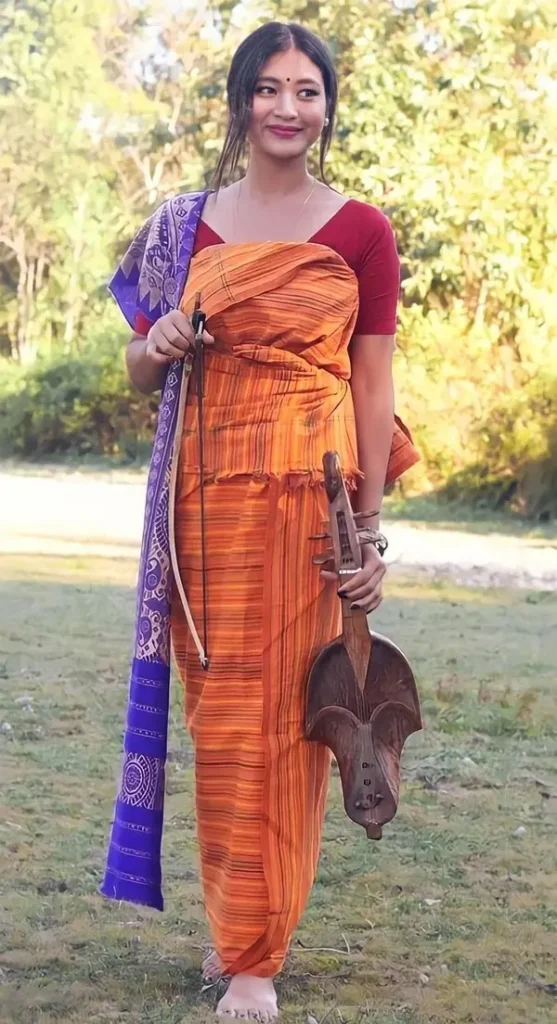
Bodo Traditional Dress Female
Boro Traditional Dress: Bodo women have a long-lasting reputation for their weaving abilities, a skill passed down through generations, influencing social status. In the past, a woman’s social status among the Boro tribe depended on her weaving abilities, impacting marriage choices.
Over time, Boro women have expertly used handlooms and handmade tools to create their traditional garments with intricate designs, reflecting their Mongolian tribal heritage. In simple terms, Bodo craftsmanship involves carefully sewing threads together to make beautiful fabrics.
Traditionally, Bodo tribal prefer colors like yellow (Gwmw), green (Gwthang), and parrot feather color (Bathogang), known as ‘Gwmw Gwthang Batho Gang.’ Nowadays, Bodo women can be seen wearing dokhona in various colors.
1. Dokhona
Bodo Traditional Dress Dokhona: The Dokhona is the main traditional dress for Bodo women, an unique one-piece garment that looks like a two-piece outfit when worn. It measures 3 meters long and 1.5 meters wide, adjusting to the body’s shape.
The Dokhona is worn by wrapping it around the waist, covering the entire body from chest to legs. The two main types of Dokhona are-
- Plain Dokhona (Matha Dokhona)
- Designed Dokhona (Agor Gwnang Dokhona)
A- Plain Dokhona
“Matha or Salamatha or Bidon” refers to a plain woven Dokhona without Agor (design) and is popular among the Bodo people for religious worship. This dokhona comes in different colors such as Gwmw (yellow), Gwthang (green), Gwja (red), Solayrong (violet), Neel (blue), etc.
Traditionally, the color yellow is the main, especially in Matha Dokhona. It is used as the traditional bridal attire called ‘Dokhona Thawsi’ (Pure-Dokhona) with textured motifs and patterns.
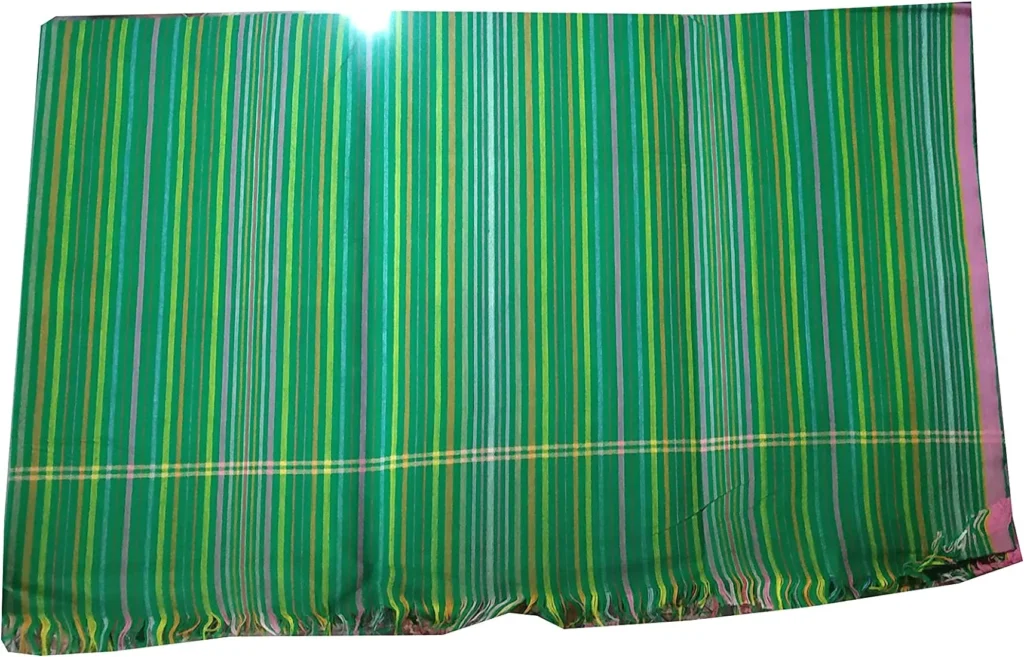
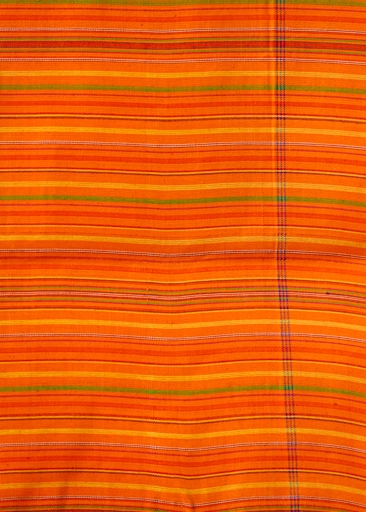
B- Designed Dokhona (Agor Gwnang Dokhona)
“Agor Gwnang” (designed Dokhona) includes various categories based on their designs. These categories include Whole Body Designed (Mwdwm Gongse Agor), Designed in Border Only (Jing Jing Aolo Agor Gwnang/Lophai Dokhona), and Slightly Designed in Body as well as Border (Gejwrasbwese Agor Erdernai).
Here are some popular designs among Bodo people-
- Agor Gubwi (Real Design)
- Parrow Megon (Pigeon’s Eye)
- Daosha Mwkreb (Winkle of Chicken)
- Thaigir Bibar (Ou Flower)
- Baigri Bihar (Wild Berry’s Flower)
- Daorai Mwkreb (Winkle of Peacock)
- Maoji Agan (Footprint of Cat)
- Hajw or Pahar Agor (Design of Hills)
- Dinkhiya Agor (Fem Leaves’ Pattern)
- Mafur Agan (Bear’s Feet)
- Taigir Bibar (Elephant Apple Plant Flower)
- Khaseo Bikha (Chest of Tortoise)
- Agor Gidir (Diamond Shape)
- Bandhuram Agor (Design first crafted by Banduram Kachari)
- Phul Mubla (Varieties of Bloomed Flowers)
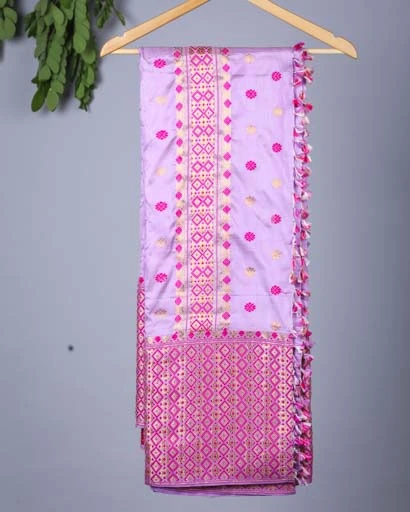
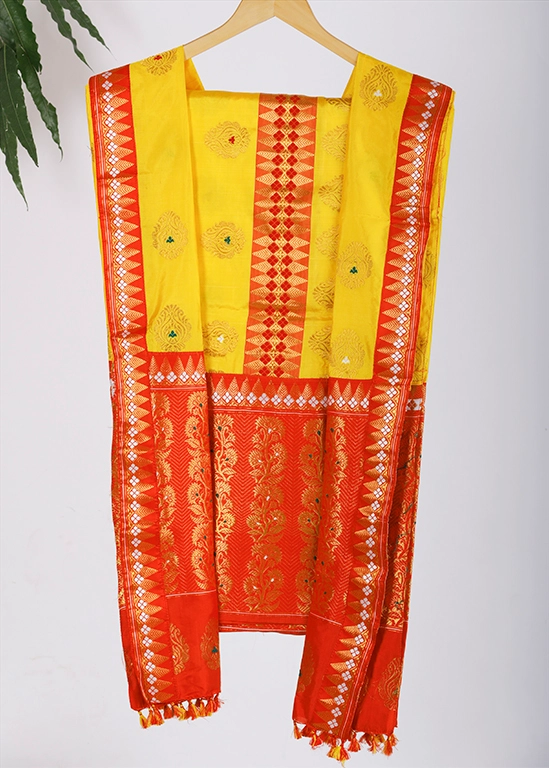
(Note: The traditional attire of Bodo women is completed by wearing the Dokhona, pairing it with a blouse, and adding a Jwmgra or Pasra of Fali (scarf) on the shoulder)
2. Jwmgra or Pasra of Fali (Long Scarf)
Bodo Traditional Long Scarf: Bodo women adorn the upper part of their body with Jwmgra or Fashra or Pali or Rege-Regang (scarf). This scarf is approximately 2.5 meters long and about 1 meter wide. The Agors (designs) crafted in Jwmgra are typically larger than those in Dokhona.
The Hajw Agor or Pahar Agor (mountain design) is particularly popular among various designs. It is the scarf worn by Bodo women of all ages.
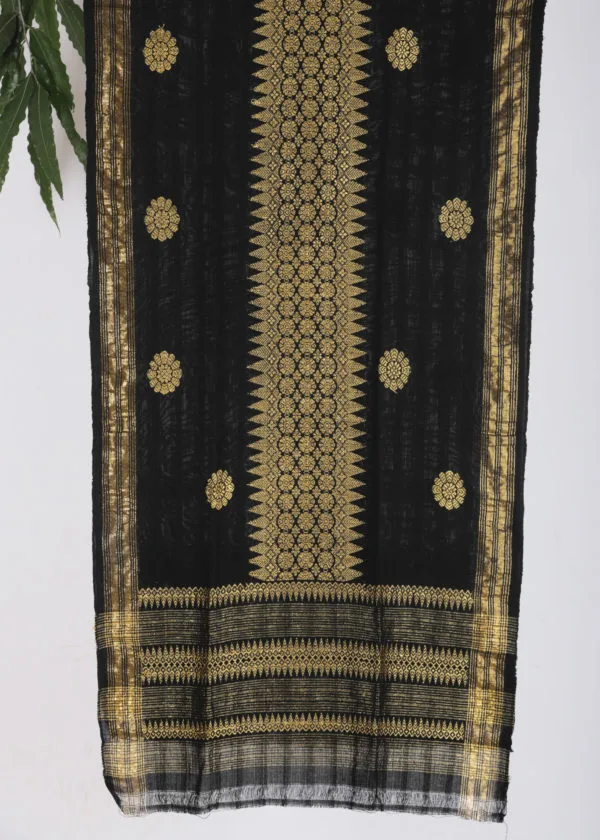
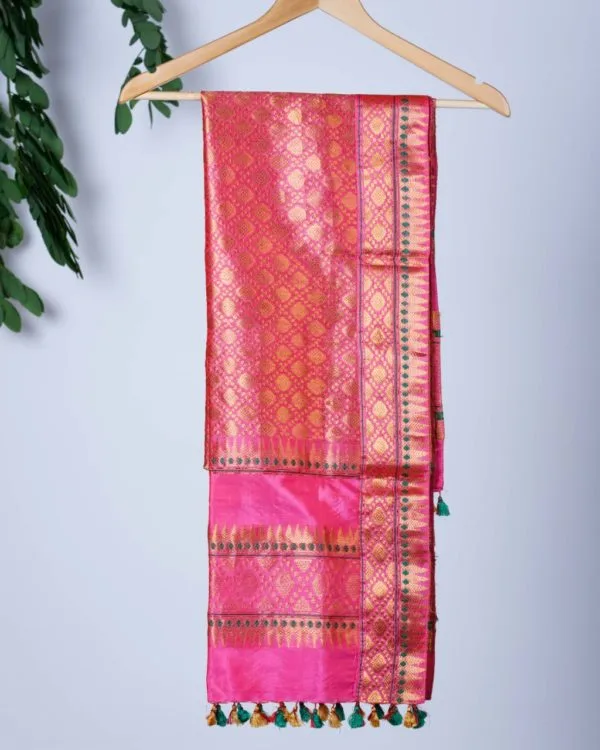
3. Endisi (Shawl)
Bodo Traditional Shawl: Endisi is a shawl worn by Bodo women, crafted from silk produced by silkworms. It is worn during the cold season to provide warmth.
In addition to Endisi, Bodos use various other types of clothing like khonia, phalli, gandusi, woolnisi, jisridanaisi, thosoksi, labsi, etc
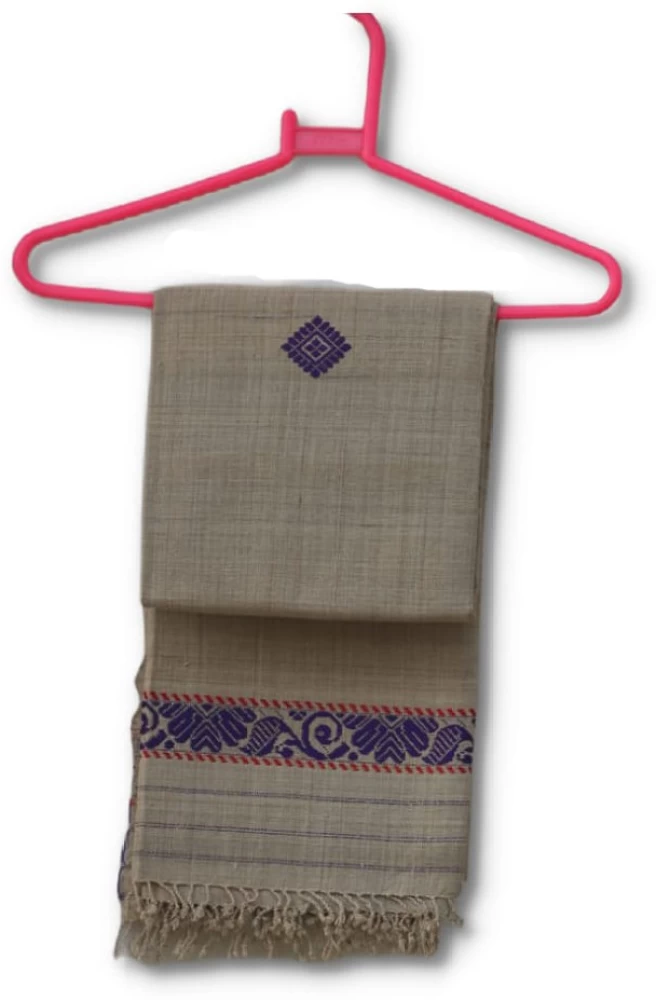
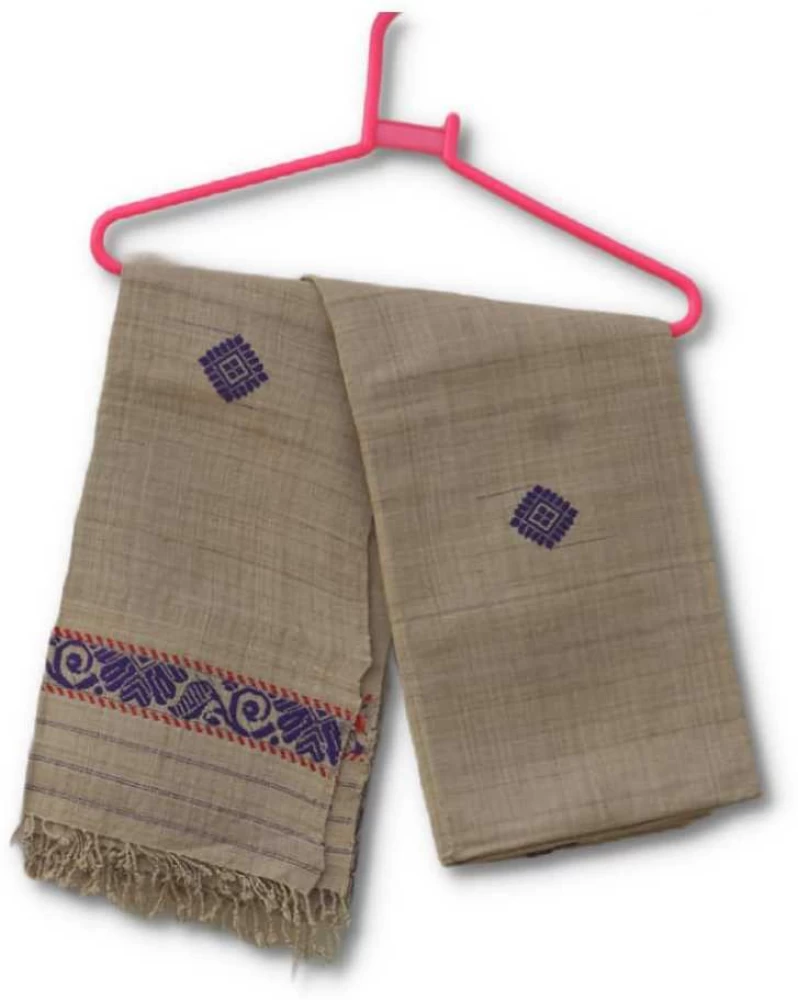
4. Aronai (Scarf)
Bodo Traditional Aronai: The Aronai (small scarf) carries great beauty for the Bodo people and is worn by both men and women. It is used in multiple purposes such as providing warmth around the neck in winter and draping over one shoulder during dancing. It is also used to honor guests by presenting it as a gift and placing it around the guest’s neck.
The recognition of an Aronai relies on the “PaharAgor” or “HajwAgor” design present on both edges of the woven cloth. Without this distinctive design, the cloth would not be identified as an Aronai.
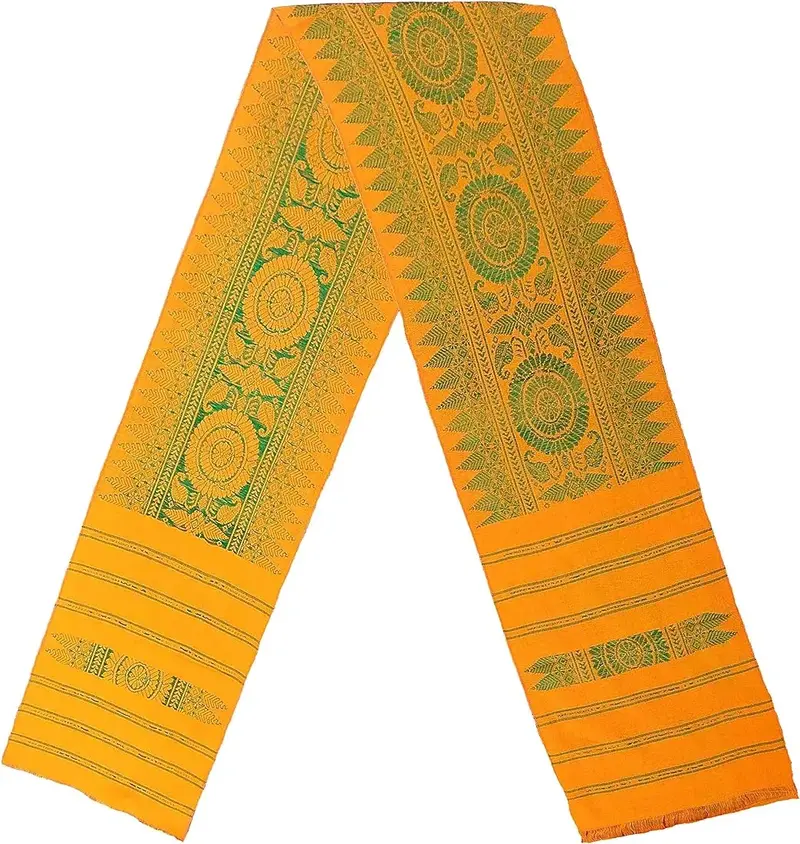
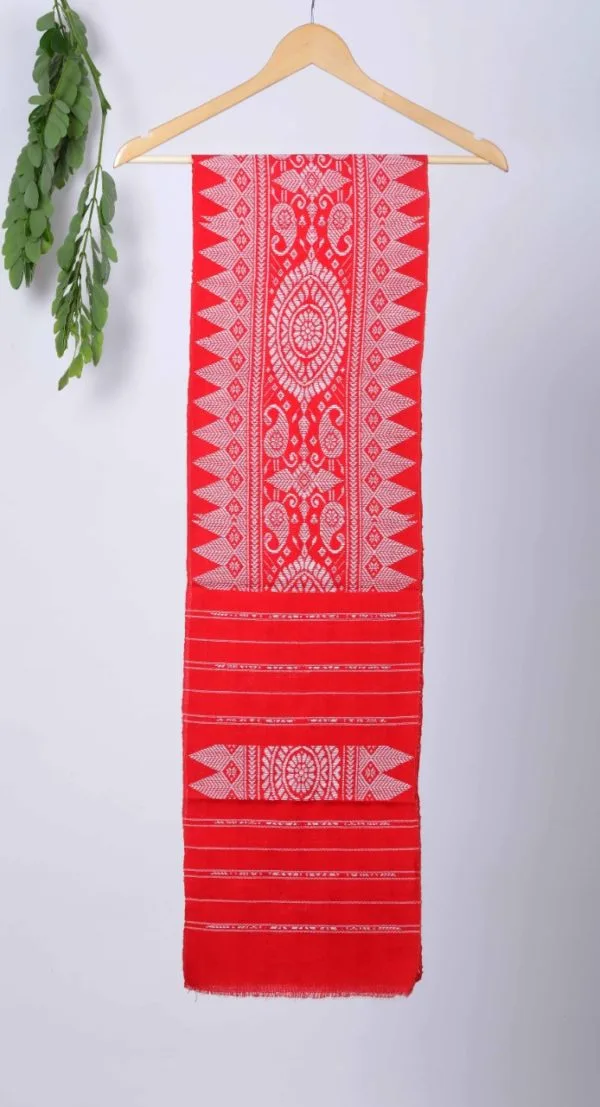
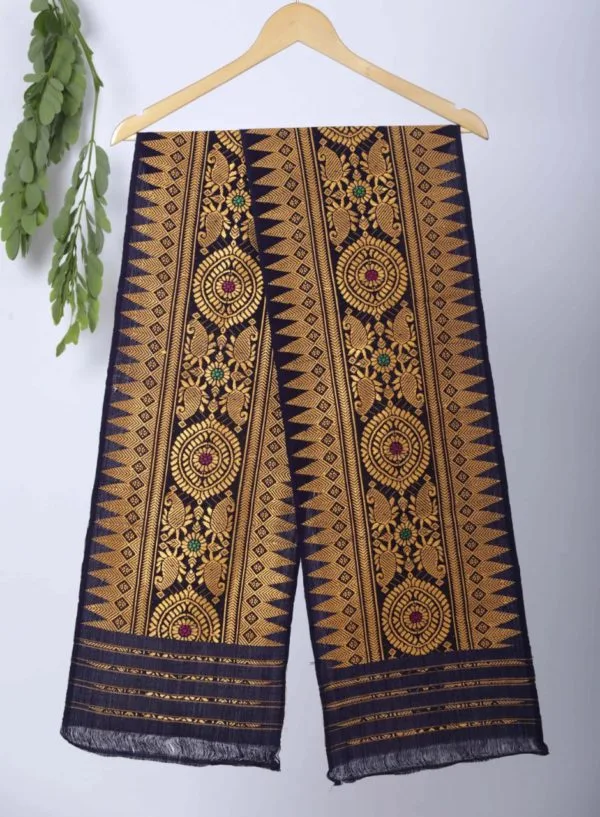
Bodo Traditional Dress Men
1. Gamsha (Towel)
Bodo Traditional Gamsha: The Bodo men wear a traditional attire called “Gamsha”, which is 2 meters long and 1.2 meters wide. They tie it around their waist, covering from the waist to the knee.
The common color for Bodo gamsha is green with a white border. These garments are also available in different colors like slightly red with white border, and combinations like white & blue. It’s a must-wear during religious worship and for Bodo bridegrooms.
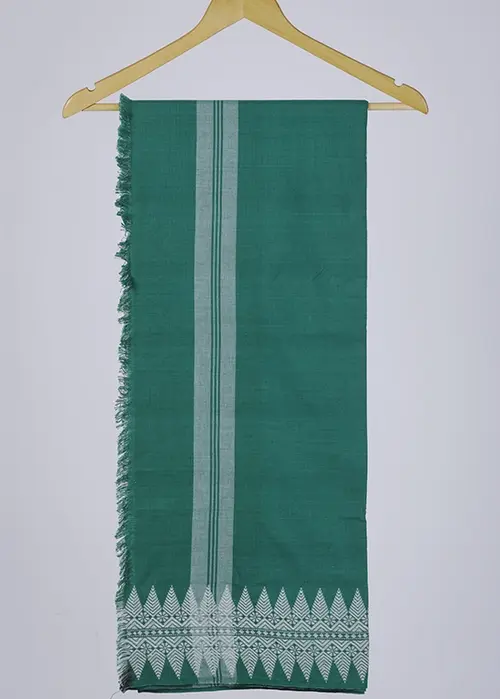
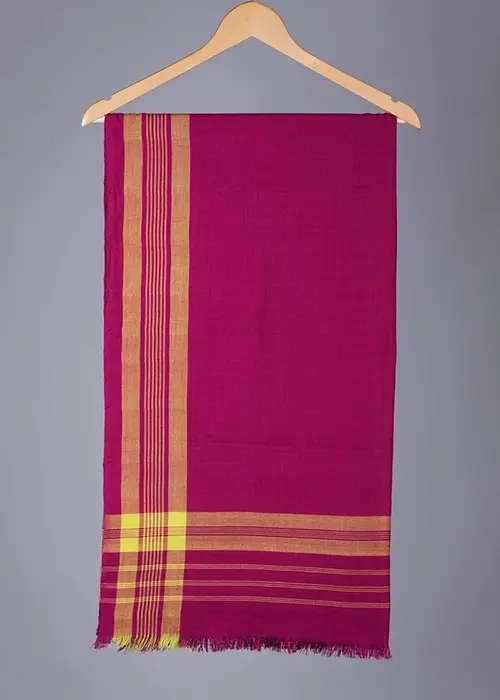
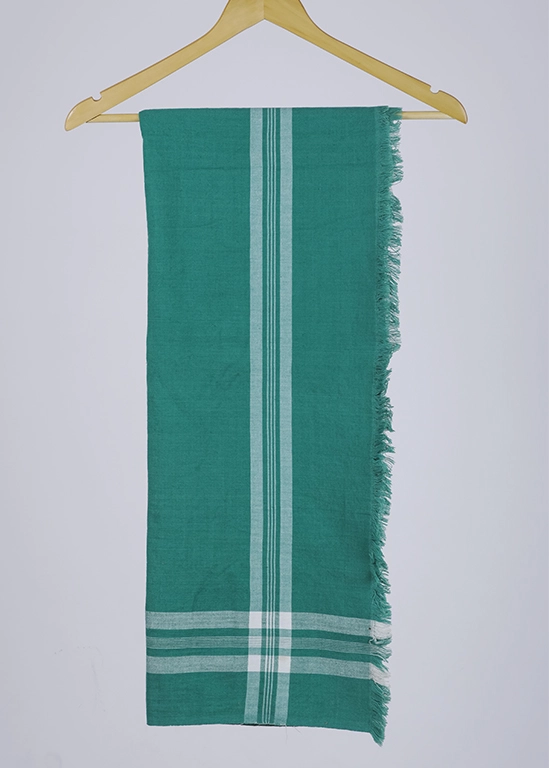
2. Khot Gosla (Vest)
Bodo Traditional Vest: The Khot Gosla is a fancy sleeveless vest for Bodo men, designed with a front opening and adorned with various dokhana-inspired patterns. Men wear it on special occasions, festivals, and socio-cultural events. It comes in different colors like yellow, green, red, and white.
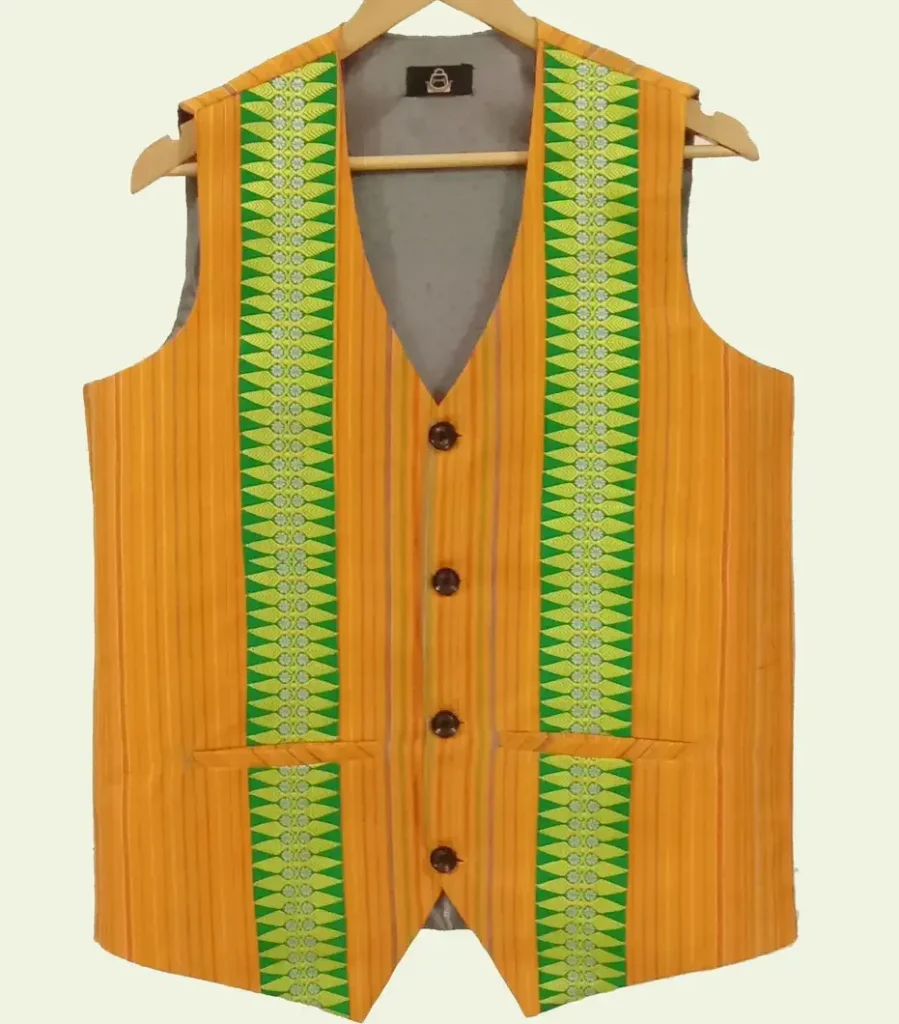
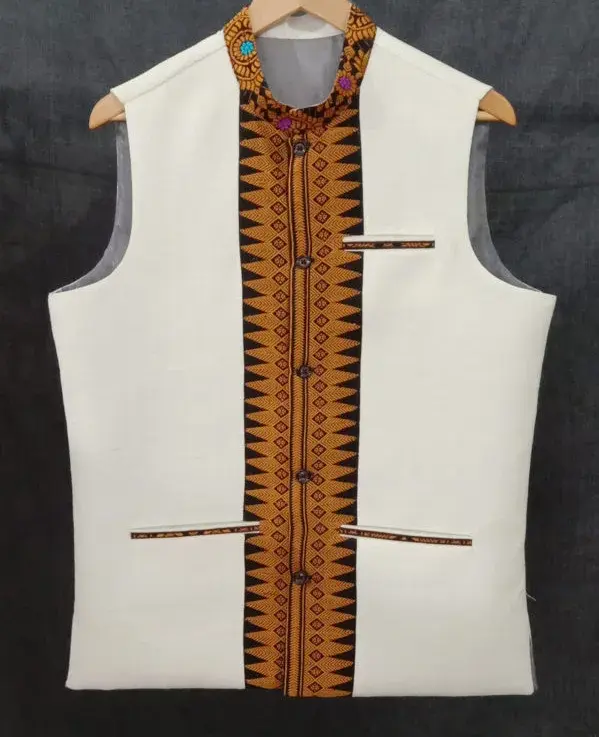
Bodo Traditional Dress Online Shopping
Bodo traditional dresses are available for purchase both online and in physical stores. Online shopping is easy and hassle-free, with options like Amazon, Flipkart, Meesho and the local site like Hathai.org.
However, if you want better quality and enjoy checking things in person, visiting stores in places like Kokrajhar, Chirang, Udalguri, Baksa is a good choice. Bodo people like to see and feel the materials before making a purchase.
Bodo Traditional Dress Price
The price of Boro Traditional Dresses varies depending on the design and quality of materials used. Aronai and Gamsha have a base price of approximately Rs. 200 with basic materials, but the price increases for high quality materials.
For regular Dokhona, prices start at around Rs. 400 but the dokhona’s with comparatively better qualities are expensive. Vests have a starting price of around one thousand, which fluctuates based on the design and quality, and similarly, Endisi also begins from thousand.
Also Read,
- Aronai Bodo Traditional Dress
- List of Local Football Tournaments in Bodoland
- List of sports players from Bodoland
- KDSA Ground Kokrajhar
- SAI Stadium Kokrajhar
Bodo Tradition Dress FAQs
1. What is Bodo traditional dress called?
Dokhona is a traditional attire commonly worn by Bodo women. It is paired with a blouse, and a Jwmgra or Pasra of Fali (scarf) on the shoulder.
2. What is Aronai?
The Aronai is a traditional small scarf used by the Bodo people and is worn by both men and women. It is used in multiple purposes such as- to honor guests by presenting it as a gift and placing it around the guest’s neck, and draping over one shoulder during dancing.